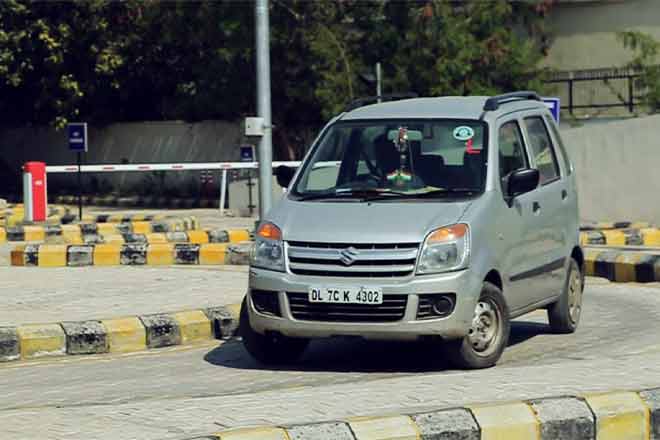You’d think that a country with one of the world’s largest automotive markets and with the highest road accident fatalities would have a thorough and stringent examination to obtain a licence to drive. But that isn’t the case despite Indian roads being so dangerous that they claim a life every three minutes. While on the surface it seems that the Indian Government is trying to improve the situation, we wanted to find out if the steps being taken have sustainable impacts on how Indians drive.
The Delhi Government in collaboration with Maruti Suzuki has taken measures to create what is said to be a comprehensive, consistent, stringent and transparent method of evaluating applicants for driving licences in India. The Delhi Transport Corporation has set up 12 Automated Driving Test Centres (ADTC). Here applicants are evaluated on multiple parameters to get their licence. What is interesting about the ADTC is that for the first time in the world, driving tests are being conducted not by humans, but by a computerised system making everything black and white.
The ADTCs use high definition cameras with image processing technology. The system has been developed by Maruti Suzuki along with IDEMIA, a global leader in Augmented Identity. How it all works is that there are high definition cameras positioned strategically around the track. The system captures, recognises and tracks the motion of the car to asses the applicants’ driving abilities. All the data from the cameras and the sensors are sent to the main control room where the monitors display the driver’s performance. The track features multiple stages and the track is marked off with yellow lines. Should the driver clip or cross the yellow line more than three times, or for some reason not complete a stage in the stipulated time, they would fail the test and would have to re-apply.
The track itself has two layouts. The one for cars has 4 sections, and each must be cleared before one is allowed onto the next. The first is a reverse S. The second stage is a simple figure of 8, while the third section sees a traffic light test, a parallel parking test and what they claim is a test of overtaking. Should the driver clear them, then they are allowed onto the fourth and final stage which is a gradient and gradient start test. You must climb the slope and stop the car at a slight gradient and then hold for 8 seconds. Then you must restart without hindrance or stalling to cross the finish line.
The second layout is for two-wheelers and it is simplified even further. It starts with a straight ramp test to check the rider’s balance. Then the rider must navigate around a slalom course to check their ability to manoeuvre the vehicle and then come to a straight and stop. At any point during the test should the rider’s feet touch the ground, they would fail the test.
At first glance, it all looks fairly simple and easy to understand what needs to be done. But the numbers suggest that initially, 95% of applicants failed the test. Now that number has improved to about half the applicants passing this test. But deciding to put my money where my mouth is, I decided to have a go myself to see if it is as hard as the numbers suggest it is. With 10 years of driving experience already under my belt and not considering my self as a flawless driver, I was able to complete the test without clipping the yellow line anywhere and well under the stipulated time.
While one may argue that I’m a so-called “expert” and I should be able to, should applicants who struggle to clear a test this simple be given a licence to drive in a country with a fatality rate as high as ours in the first place? The level of confidence of applicants which we observed at the test facility was astounding. Either some were highly under-confident and that forced them to make errors, while on the other hand, some arrived with overconfidence and failed.
The system developed and set up by Maruti Suzuki and IDEMIA gives no quarter to any applicant. if the computer does not pass you due to a mistake, then the system will not allow issuance of your driving licence. The technology looks bulletproof and so does the concept. Additionally, the applicants who come to give the test cannot be blamed either. They come with the limited experience and knowledge about driving, vehicles and especially the rules and manners of the road, which were probably provided by someone who themselves have not been trained properly.
The sole reason for such a high failure rate is that we lack a standardised driver training curriculum. Before a test, there needs to be a training programme in place. It must be a thorough multi-module system to include everything from basics like correct seating position, setting up your mirrors, theory classes, tests on the Centre Motor Vehicle Rules and basic road manners to high-speed driving abilities, merging intro traffic at intersections, braking tests, safely changing lanes as here is where all of this counts. The tests being conducted, which half of the population is failing, is an elementary lesson at best. Additionally, road design and infrastructure also need to be standardised and not to a cost-effective design retrofitted to the terrain at hand.
Every year nearly 1.5 lakh people die in road accidents in India. Should we wish to bring those road accidents down, a solution for issuing driving licences alone, seems arbitrary. With nearly 50% of Indian applicants failing a test as simple as this, unfortunately, speaks volumes of the state of what is accepted as a trained driver and India’s non-existent standardised driver training programme.
Also Read: Top 100 traffic violators list out in Pune: Some with over 100 challans!
